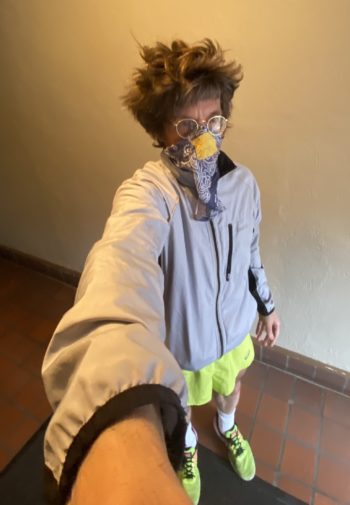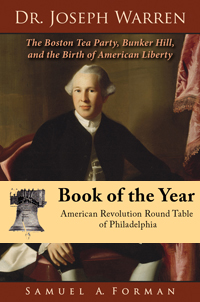Michael McHugh, an architect, history enthusiast, and runner, annually commemorates the historic Midnight Ride by running a course from the approximate site of Dr. Joseph Warren’s house on the modern City Hall Plaza to the Hancock-Clarke House in Lexington, a distance of about 17 miles. Mr. McHugh is something of a purist. He insists on performing the athletic feat on the actual anniversary and time of day of the historical events, which occurred on the evening of Wednesday, April 18th. For some years, Patriot’s Day is celebrated in Eastern Massachusetts on a convenient Monday making a 3-day weekend and he beginning of spring break for most area public schools. Schools are not in session physically this year and the usual school vacation will not occur this year in most regional towns.
The actual events Michael recalls occurred on the late evening of April 18, 1775. Dr. Joseph Warren, acting under the authority of the Massachusetts Provincial Congress, of which he was president pro tem and chair of its Committee of Safety, summoned Paul Revere and William Dawes to his house, to dispatch the men to mobilize the Patriot militia in Concord and towns along the way. Earlier that evening Warren became aware of the impending British troop movement and its object to seize Patriot military stores being stockpiled in Concord. He also supposed that British Governor General Gage intended to arrest John Hancock and Samuel Adams, then sheltering at the Hancock-Clarke House in Lexington. History has later revealed that the British were after the military stores rather than the Patriot activists. Historian J.L. Bell in his latest book The Road to Concord details this iconic event and the British desire to retrieve four bronze cannon earlier purloined by the Patriots in Boston for a British storehouse.
Mr. McHugh’s run conflates several aspects of the iconic Midnight Ride and how it has come to be observed. McHugh follows one course on modern roads. His running recalls the Boston Marathon, originally envisioned in the 1890s as commemorating the Revolutionary War events, before it became an international athletic event in its own right. This year, a year of social distancing to slow the spread of SARS-CoV2 virus, Mr. McHugh was careful to wear a face mask. He set out on Saturday evening, April 18th. Social distancing was easy enough for him as he was the only soul adventurous enough to run the distance in 40 degree F. Massachusetts “springtime.”
Boston Mayor Marty Walsh, and leaders of area towns, had earlier discouraged runners setting out on Patriot’s Day Monday on their own, so as to avoid road and virus transmission hazards.
Historically, the most famous rider was none other than Paul Revere. After receiving orders from Dr. Joseph Warren, Revere went to his North End home, prepared for the ride, saw to the famous lanterns being place by an associate in the steeple of Old North Church, crossed the Mystic River via the north ferry, obtained a mount in Charlestown, and continued on horseback on his errand. William Dawes departed Warren’s house, passed by the British sentry on Boston Neck, then preceded on horseback to Lexington via the main road through Brookline and then West. After conferring with Hancock and Adams by midnight in Lexington, Dawes and Revere rode together toward Concord. Both were captured by a British patrol in Lincoln, between Lexington and Concord. A local “High Son of Liberty” physician they met on the road eluded the British patrol and delivered to alarm to Concord. Mobilized minutemen and town militias faced off against the British expeditionary force on the Lexington Battle Green and at the North Bridge in Concord on the morning of April 19, 1775.
For more about this historic event, virtual commemorations, and visitor information, visit the Lexington Minute Men and Lexington Historical Society websites.

 Follow
Follow